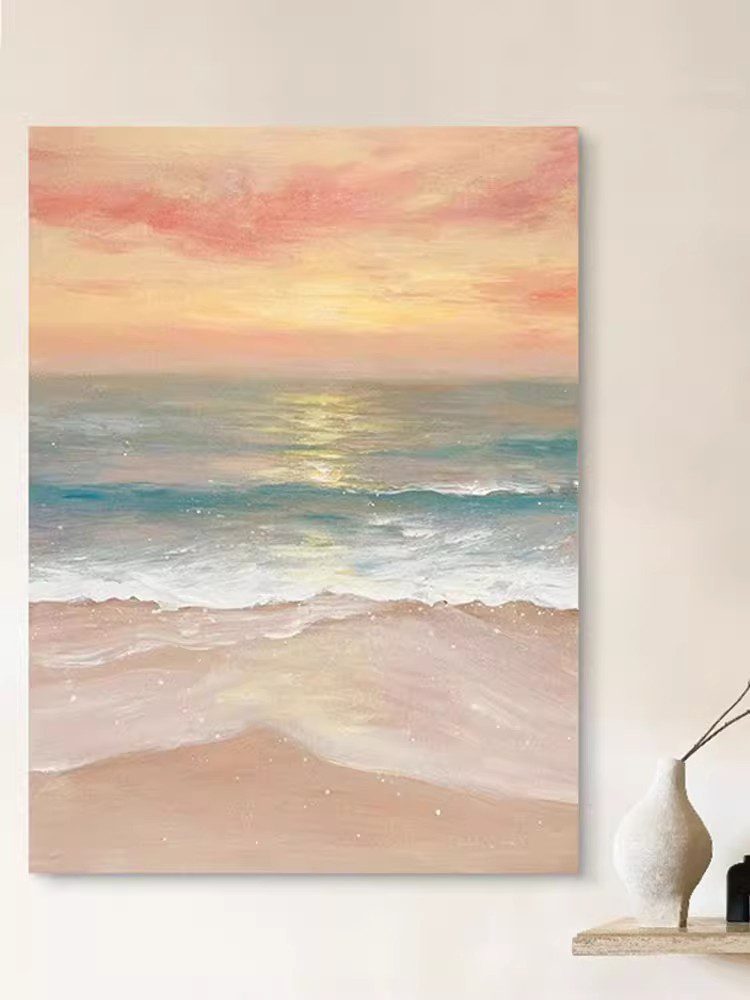The characteristics of hand-painted oil paints can be analyzed from multiple dimensions. The following is a detailed explanation of the specific characteristics:
Transparency and coverage
Oil paints can be classified into four major categories based on their transparency: transparent, semi-transparent, semi-opaque and opaque. Transparent pigments have high hue saturation but poor coverage, and are suitable for overdyeing techniques. Opaque pigments have a solid hue and strong coverage, and are often used for laying the base color layer. Semi-transparent and semi-opaque pigments lie between the two, offering artists more possibilities for expression.
There is a close negative correlation between transparency and coverage power. The higher the transparency, the weaker the coverage. Conversely, the lower the transparency, the stronger the coverage. In the direct painting method, if multiple layers of pigments with poor covering power are used for covering, it may cause the underlying pigments to flip up, affecting the picture effect.
Drying speed
The drying process of oil-based pigments relies on the oxidation of components in the drying oil, and air circulation has a significant impact on the drying speed. Generally speaking, the touchable drying speed of oil-based pigment surfaces is 2 to 7 days, while complete drying may take three to six months. The drying speeds of oil paints with different components and colors vary. For example, pigments containing metal elements such as lead, cobalt and manganese have a accelerating drying effect on drying oils and dry at a relatively fast speed. However, pigments such as ultramarine, titanium dioxide and vermilion dry relatively slowly.
Oil absorption capacity
The oil absorption capacity refers to the minimum amount of oil added to a certain amount of pigment powder during the production of oil paints, which can fully soak the pigments and bond them into shape. The oil absorption of different pigments varies greatly, which is of great significance for the production of oil-based pigments and the connection of pigment layers. Generally speaking, in oil paintings, pigments with low oil absorption capacity are used for the base layer and those with high oil absorption capacity for the covering layer, which conforms to the principle of “fat covering thin” in terms of layering and helps to make the color layers bond more firmly.
Lightfastness
Lightfastness refers to the ability of a pigment to maintain its original color under the ultraviolet rays of sunlight, which directly affects the lifespan of color preservation. Pigments with strong lightfastness can remain bright for a long time, while those with poor lightfastness are prone to fading or discoloration. For example, mineral pigments usually have strong lightfastness and are not prone to fading or discoloration. Although organic pigments have bright colors, their lightfastness is relatively poor.
Plasticity
The plasticity of oil paints refers to the property of the paints to maintain the brushstrokes, textures, etc. during painting after drying. In thick coating techniques, the plasticity of pigments and base materials is particularly important. Artists can enhance the plasticity of pigments by adding auxiliary plasticizing materials or using specialized thickening media to achieve the desired shaping effect.
Leveling property
Leveling property refers to the ability of a pigment to suppress pen marks and form a smooth surface of the coating due to tension after application. When painting delicate and smooth works or parts, the pigment needs to have good leveling properties. The transparent pigments used for color masking should also have good leveling performance. Artists can enhance the leveling property of pigments by adding substances such as leveling agents to them or using special media agents.
